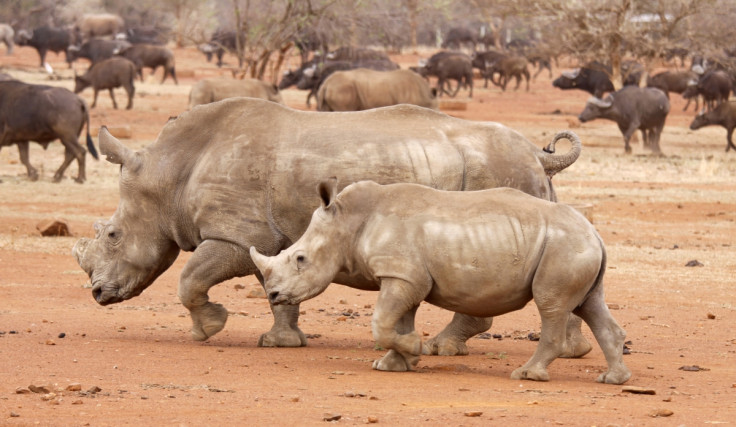World Rhino Day: 10 things you need to know about the species
They have poor eyesight but a great sense of smell while three out of the five species are critically endangered.

It is World Rhino Day – a day to celebrate the different species of rhino and raise awareness of the threats they face, from poaching to habitat loss. At the beginning of the 20th century, there were half a million rhinos across Africa and Asia but now there are around 29,000, although population numbers are slowly increasing again.
On the day, here are ten things you need to know about rhinos and the current poaching crisis.
1. The name rhinoceros is derived from the Greek words rhino – nose – and ceros – meaning horn.
2. Rhino horns are not made of bone - they are made from a protein called keratin, the same substance that fingernails and hair consist of.
3. Three of the five species of rhino are critically endangered, but the Javan rhino is most under threat. According to the charity Save the Rhino, less than 50 Javan rhinos are living in Ujung Kulon National Park in Indonesia and none exist in the wild.
4. Poaching for rhino horns is the greatest threat facing the creatures. The number of rhinos poached in South Africa has increased by around 9,000% since 2007, according to WWF. Powdered horn is used in traditional Asian medicine and horns are bought as a symbol of wealth in Vietnam.
5. Another major threat is habitat loss from human population growth and the clearance of land for human settlement and farming, as well as agricultural production like logging.

6. Western Black Rhino were declared extinct in 2011. The species was once found across the savanna of sub-Saharan Africa, but numbers of the rhino declines largely due to poaching.
7. Rhinos have been around for more than 50 million years.
8. Pregnancies in female rhinos last between 15 and 16 months. Calves stay with their mothers until they are around three-years-old.
9. The white rhinoceros (Ceratotherium simum) is herbivorous and is the second largest land animal in the world.
10. Although rhinos have very poor eyesight, they have great hearing and a good sense of smell. The olfactory portion of a rhino's brain, which is involved in the sense of smell, is the largest part.
© Copyright IBTimes 2025. All rights reserved.





















